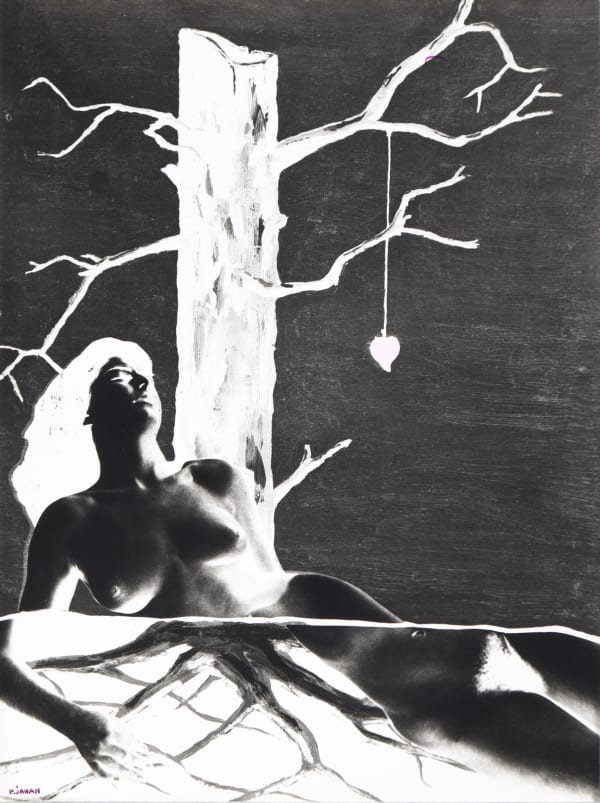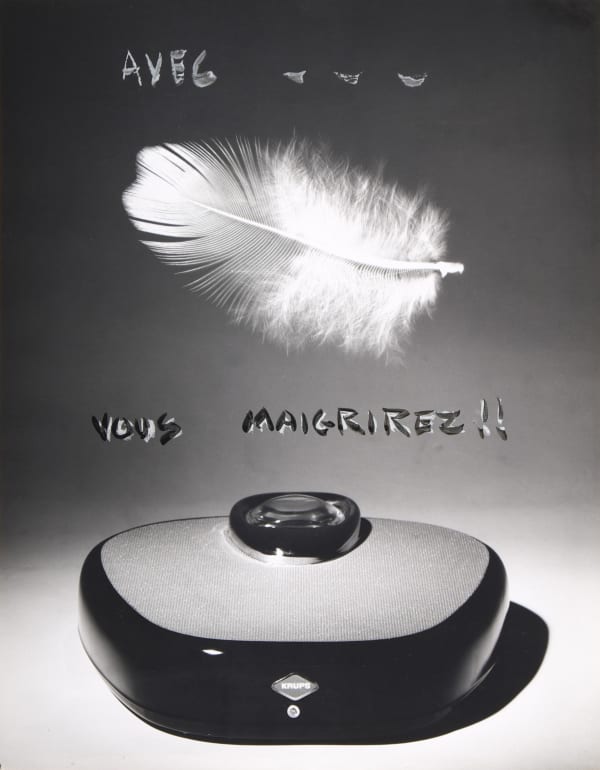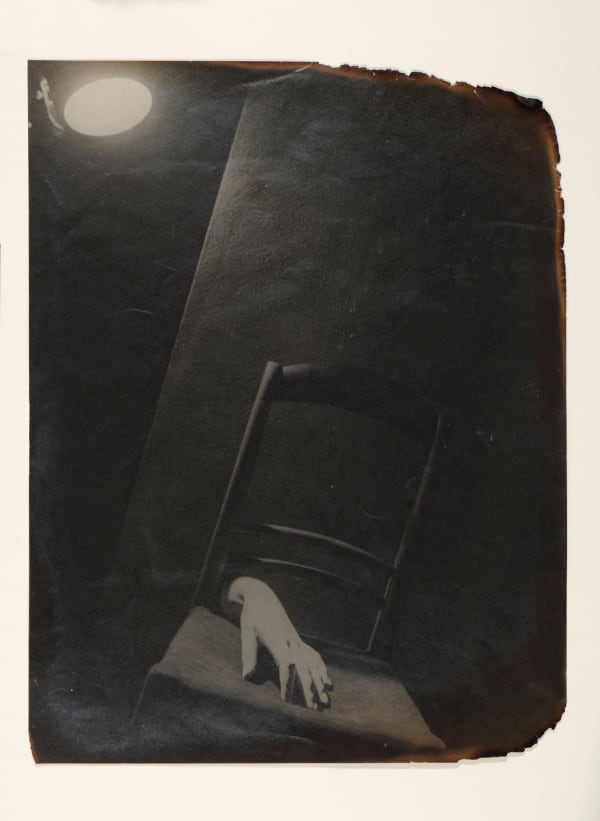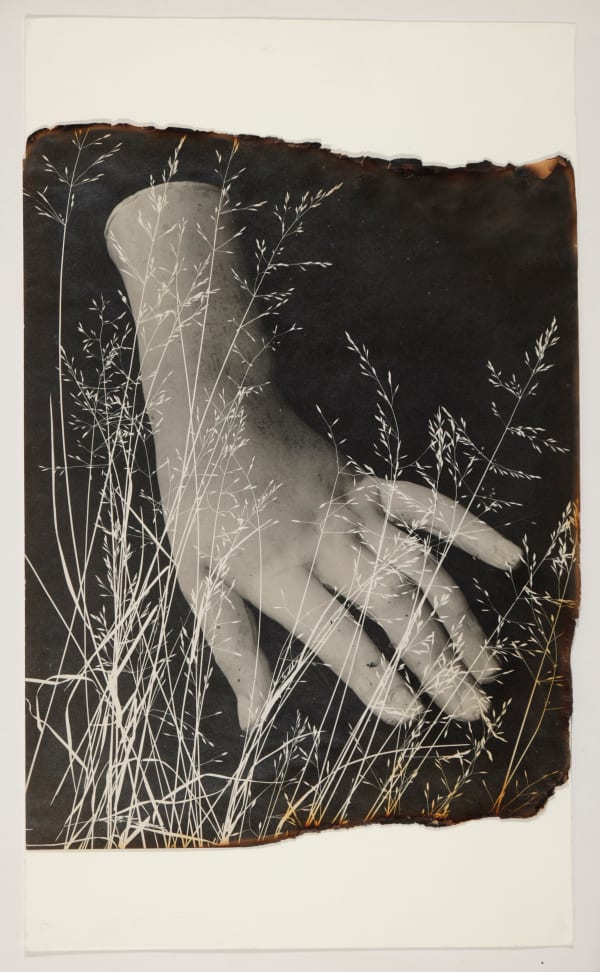Pierre JAHAN. Photogrammes et Rayogrammes : 1940-1950: Starting Sunday : La Semaine d'art des galeries parisiennes
On the occasion of Starting Sunday, organised by the Professional Committee of Art Galleries (CPGA) next October as part of Art Week in Paris, and in anticipation of the Bicentennial of Photography (2026-2027), the Galerie Jean François Cazeau — which has received the Ministry of Culture's label for this upcoming anniversary event — will present, from 24 October to 20 December 2025, an exhibition by photographer Pierre Jahan (1909-2003), entitled Photograms and Rayograms: 1940-1950.
On the occasion of Starting Sunday, organised by the Professional Committee of Art Galleries (CPGA) next October as part of Art Week in Paris, and in anticipation of the Bicentennial of Photography (2026-2027), the Galerie Jean François Cazeau — which has received the Ministry of Culture's label for this upcoming anniversary event — will present, from 24 October to 20 December 2025, an exhibition by photographer Pierre Jahan (1909-2003), entitled Photograms and Rayograms: 1940-1950.
Born in 1909, Pierre Jahan was part of a generation of photography pioneers who no longer viewed photography as a scientific or technical practice, but rather as an art form offering pleasure and freedom. A protean figure of the avant-garde, impossible to categorise, he saw this medium as a field of experimentation, governed solely by the pleasure of the eye and the hand. In his quest to have photography recognised as an art form in its own right, with its own plastic and expressive possibilities, Pierre Jahan joined his peers Henri Cartier-Bresson, Man Ray, Lee Miller, László Moholy-Nagy and Dora Maar, as well as their colleagues on the other side of the Atlantic, such as Alfred Stieglitz.
The Surrealist Herbarium (1945–1948), presented in the exhibition, is undoubtedly Pierre Jahan's most surprising series of photograms. The artist returns to the scientific origins of the process often used in botany, while at the same time diverting it. Thus, specimens of grasses and other plants are superimposed on photographs.
-
 Pierre JahanL'Herbier surréaliste (Arrehenathrum Elatius), 1945-1948Gelatin-silver print, photogram and burnt edges40 × 31 cm
Pierre JahanL'Herbier surréaliste (Arrehenathrum Elatius), 1945-1948Gelatin-silver print, photogram and burnt edges40 × 31 cm -
 Pierre JahanL'Herbier surréaliste (Artemisia Estracunculus), 1945-1948Gelatin silver print, photogram, burnt edges40 × 31 cm
Pierre JahanL'Herbier surréaliste (Artemisia Estracunculus), 1945-1948Gelatin silver print, photogram, burnt edges40 × 31 cm -
 Pierre JahanL'Herbier surréaliste (Carduus Nutans), 1945-1948Gelatin silver print, photogram, burnt edges40 × 31 cm
Pierre JahanL'Herbier surréaliste (Carduus Nutans), 1945-1948Gelatin silver print, photogram, burnt edges40 × 31 cm -
 Pierre JahanL'Herbier surréaliste (Cirsium Palustre), 1945-1948Gelatin silver print, photogram and burnt edges40 × 31 cm
Pierre JahanL'Herbier surréaliste (Cirsium Palustre), 1945-1948Gelatin silver print, photogram and burnt edges40 × 31 cm -
 Pierre JahanL'Herbier surréaliste (Hordeum Murinum), 1945-1948Gelatin silver print, photogram, burnt edges40 × 31 cm
Pierre JahanL'Herbier surréaliste (Hordeum Murinum), 1945-1948Gelatin silver print, photogram, burnt edges40 × 31 cm -
 Pierre JahanL'Herbier surréaliste (Lotus Corniculatus), 1945-1948Gelatin silver print, photogram, burnt edges40 × 31 cm
Pierre JahanL'Herbier surréaliste (Lotus Corniculatus), 1945-1948Gelatin silver print, photogram, burnt edges40 × 31 cm -
 Pierre JahanL'Herbier surréaliste (Urtica Dioïca), 1945-1948Gelatin silver print, photogram, burnt edges40 × 31 cm
Pierre JahanL'Herbier surréaliste (Urtica Dioïca), 1945-1948Gelatin silver print, photogram, burnt edges40 × 31 cm -
 Pierre JahanL'Herbier surréaliste. Photogramme autour du graminée, 1945/48Photogramme40 x 31 cmUnique
Pierre JahanL'Herbier surréaliste. Photogramme autour du graminée, 1945/48Photogramme40 x 31 cmUnique -
 Pierre JahanNu au chardon, 1952Gelatin silver print, photogram and photo-collage40 × 30 cmSigned by the artist on the lower-left corner.
Pierre JahanNu au chardon, 1952Gelatin silver print, photogram and photo-collage40 × 30 cmSigned by the artist on the lower-left corner. -
 Pierre JahanPhotographie de l'incendie de l'appartement , 1948Photographie29 x 24 cmOne of only a few existing photos, developped at the time.
Pierre JahanPhotographie de l'incendie de l'appartement , 1948Photographie29 x 24 cmOne of only a few existing photos, developped at the time. -
 Pierre JahanGelatin-silver print, photogram (unique)40 × 30 cmSigned on the lower left.
Pierre JahanGelatin-silver print, photogram (unique)40 × 30 cmSigned on the lower left. -
 Pierre JahanA coeur perdu, 1946Photogramme30 x 40 cmPartially hand coloured monotypeDeveloped by the artist, with the studio stamp on the back. Dated by the artist.
Pierre JahanA coeur perdu, 1946Photogramme30 x 40 cmPartially hand coloured monotypeDeveloped by the artist, with the studio stamp on the back. Dated by the artist. -
 Pierre JahanAvec Krups vous maigrirez, 1960Photomontage31 x 21 cmUniquephotomontage tiré par l'artiste et inscrit à la main
Pierre JahanAvec Krups vous maigrirez, 1960Photomontage31 x 21 cmUniquephotomontage tiré par l'artiste et inscrit à la main -
 Pierre JahanSans titre , 1945-1948Gelatin silver print, photomontage, burnt edges.40 × 30 cm
Pierre JahanSans titre , 1945-1948Gelatin silver print, photomontage, burnt edges.40 × 30 cm -
 Pierre JahanSans titre (Herbier), 1945-1948Gelatin silver print, photogram, burnt edges40 × 31 cm
Pierre JahanSans titre (Herbier), 1945-1948Gelatin silver print, photogram, burnt edges40 × 31 cm -
 Pierre JahanSans titre (Herbier), 1945-1948Gelatin silver print, photogram40 × 30 cmSigned by the artist on the lower left-corner
Pierre JahanSans titre (Herbier), 1945-1948Gelatin silver print, photogram40 × 30 cmSigned by the artist on the lower left-corner -
 Pierre JahanSans titre (Herbier), 1946Gelatin silver print, photomontage, photogram40 × 31 cmSigned on the right, inside the hand silhouette
Pierre JahanSans titre (Herbier), 1946Gelatin silver print, photomontage, photogram40 × 31 cmSigned on the right, inside the hand silhouette -
 Pierre JahanSans titre (L'Incéndie de l'atelier), 1948Gelatin-silver print40 × 31 cmSigned on the lower right
Pierre JahanSans titre (L'Incéndie de l'atelier), 1948Gelatin-silver print40 × 31 cmSigned on the lower right -
 Pierre JahanSans titre (Masque), 1945-1948Gelatin-silver print, burnt edges39 × 30 cm
Pierre JahanSans titre (Masque), 1945-1948Gelatin-silver print, burnt edges39 × 30 cm -
 Pierre JahanSans titre (Nu à l'épi), 1945-1948Gelatin-silver print, photogram, burnt edges40 × 31 cm
Pierre JahanSans titre (Nu à l'épi), 1945-1948Gelatin-silver print, photogram, burnt edges40 × 31 cm -
 Pierre JahanSans titre (photogramme), 1945-1948Gelatin silver print, photogram and burnt edges40 × 30 cm
Pierre JahanSans titre (photogramme), 1945-1948Gelatin silver print, photogram and burnt edges40 × 30 cm -
 Pierre JahanSans titre (Statue), 1945-1948Gelatin silver print, photomontage, burnt edges40 × 30 cm
Pierre JahanSans titre (Statue), 1945-1948Gelatin silver print, photomontage, burnt edges40 × 30 cm
Galerie Jean-François Cazeau
Pierre JAHAN. Photogrammes et Rayogrammes : 1940-1950
du 24 octobre au 20 décembre 2025
À l’occasion du Starting Sunday, organisé par le Comité Professionnel des Galeries d’Art (CPGA) en octobre prochain dans le cadre de la Semaine de l’Art à Paris, et en vue du Bicentenaire de la Photographie (2026-2027), la Galerie Jean François Cazeau — qui a reçu le label du ministère de la Culture pour cet événement anniversaire à venir — présentera, du 24 octobre au 20 décembre 2025, une exposition du photographe Pierre Jahan (1909-2003), intitulée Photogrammes et Rayogrammes : 1940-1950.
Né en 1909, Pierre Jahan fait partie d’une génération de pionniers de la photographie qui considéraient cette dernière non plus comme une pratique scienti que ou technique, mais comme un art du plaisir et de liberté. Personnalité protéiforme de l’avant-garde, inclassable, il appréhendait en effet ce médium comme terrain d’exercice, dont la seule loi résidait dans le plaisir de l’œil et de la main. Ainsi, dans cette quête de reconnaissance de la photographie comme un art à part entière, doté de ses propres possibilités plastiques et expressives, Pierre Jahan rejoint ses pairs Henri Cartier-Bresson, Man Ray, Lee Miller, László Moholy-Nagy ou encore Dora Maar, ainsi que leurs confrères de l’autre côté de l’Atlantique, tel Alfred Stieglitz.
Pierre Jahan expérimenta les nouvelles techniques photogramme, rayogramme, surimpression, photomontage et photocollage – jusqu’au bout. Il fait partie, avec Moholy-Nagy, Man Ray et Christian Schad, de ces artistes ayant pratiqué la photographie sans appareil : le photogramme, par exemple ou rayogramme dans le terme de Man Ray s’avérant être une photographie obtenue par simple interposition d’un objet entre le papier photosensible et la source lumineuse. Son procédé fixe l’image, permet d’obtenir des silhouettes en négatif sur la photographie finale.
L’Herbier surréaliste (1945-1948), présenté dans l’exposition, est sans doute la série de photogrammes la plus surprenante de Pierre Jahan. L’artiste revient aux origines scientifiques du procédé souvent utilisé dans la botanique, tout en le détournant. Ainsi, des exemplaires de graminées et autres plantes se superposent sur des photographies.
























